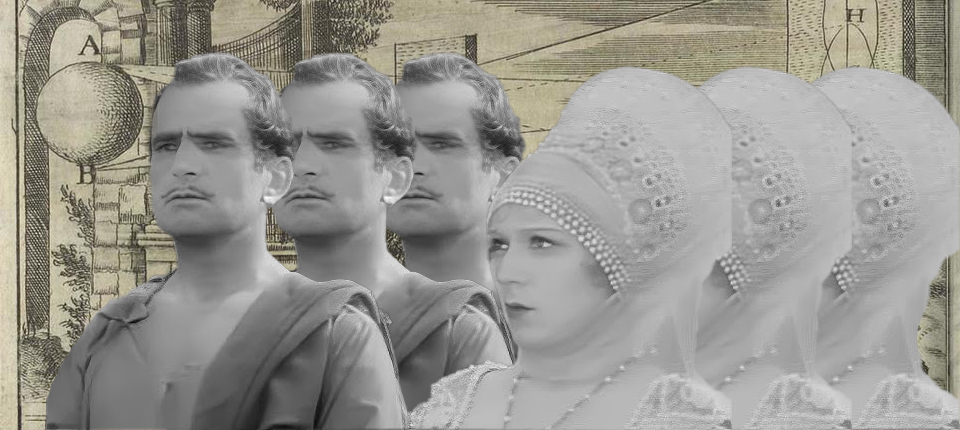The Medieval Scriptorium: Making books in the Middle Ages is a highly readable account of developments in book production in western Europe during the Middle Ages, surveying and contextualizing many of its best-known and most significant treasures while casting interesting light on the circumstances of their production. Sara J. Charles introduces us to various individuals behind the books and reminds us of the human cost: the sore backs, the eye strain and the freezing fingers. Each of the book’s chapters is prefaced with a brief vignette that brings the subject to life with telling details. Thus, we encounter the nun who drops a lump of her own earwax into the egg glair used to stick gold leaf to parchment, the librarian inspecting sheets of parchment for holes before copying begins, and the painter getting bits of lapis lazuli stuck in her teeth after inadvertently licking her paintbrush.
The author takes a broad and ambitious historical sweep. She begins by offering a history of writing, followed by an examination of the relationship between Christianity and the “codex” – the book format in which pages are piled on top of each other and bound on one edge, which we still use today. The importance of the Bible (from the Greek word for “book”) to the Christian religion led to monastic houses developing the skills for producing codices of the Scriptures and service books. It is popularly assumed that such copying was carried out in a room devoted to scribal practice, known as a “scriptorium”. As the rest of the book sets out to demonstrate, however, evidence for scriptoria is surprisingly scarce.
Charles describes the rise of monasticism in the West, introducing important codices such as the St Augustine’s Gospels, brought to Canterbury by Augustine on his mission from Pope Gregory the Great to convert the Anglo-Saxons in 597. The survival of books such as the Lindisfarne Gospels and the Book of Kells shows that, by the beginning of the ninth century, Christianity was flourishing in disparate parts of the British Isles.
This is followed by an examination of medieval book production. Here the word scriptorium comes under pressure, because there is little evidence in the pictorial and archaeological record of a specific room set aside for the copying of manuscripts by monks seated in serried ranks. Instead the evidence points to the use of the cloister as a location for copying, with scribes working independently under sporadic supervision. This continuous covered walkway was also used for teaching novices, so its use for reading and writing is not as surprising as it might at first seem. Charles describes in detail the gruesome process by which a freshly flayed animal skin was converted into parchment, and the techniques of manuscript illumination, with an exhaustive guide to the various pigments used. Along the way we are given intriguing glimpses into the identities of the usually anonymous copyists.
Next comes a survey of developments in book production in the long twelfth century, the period that witnessed the rise of the universities. Concomitantly there grew a demand for a wider range of texts, covering canon and civil law, philosophy, theology and the arts, and for the cheap student textbook – satisfied through the “pecia” system, whereby students rented out sections of a work to copy themselves. A final chapter takes the story up to the introduction of printing by movable type, invented by Johannes Gutenberg in Mainz in the fifteenth century. The extent to which this transformed book production is perhaps overstated, because “mass production” was a much later development.
The book is illustrated generously with plates depicting exquisite examples of manuscript decoration and illustration. Perhaps inevitably the focus is more on artwork than on scripts, so that differences between, say, varieties of insular minuscule are described rather than illustrated. As the book is concerned with dismantling the “mythology of the scriptorium”, it is surprising that the structure of the book remains so firmly wedded to it. Not only is the book titled The Medieval Scriptorium, the final chapter is called “The End of the Scriptorium”. It is indicative of how strong a hold that term and all it implies has on the modern view of manuscript production. The printing press may have spelled the end for the monastic scribe, but it was just the beginning for the process of mythmaking about medieval modes of book production.
Simon Horobin is Professor of English Language and Literature at the University of Oxford
The original version of this review pointed out an error in the book’s spelling of Gutenberg, taken from the uncorrected proof of the book. This mistake had, in fact, been corrected in the finished copy.
The post In the script appeared first on TLS.

 By Times Literary Supplement | Created at 2024-10-29 21:41:39 | Updated at 2024-10-30 09:28:39
6 days ago
By Times Literary Supplement | Created at 2024-10-29 21:41:39 | Updated at 2024-10-30 09:28:39
6 days ago



